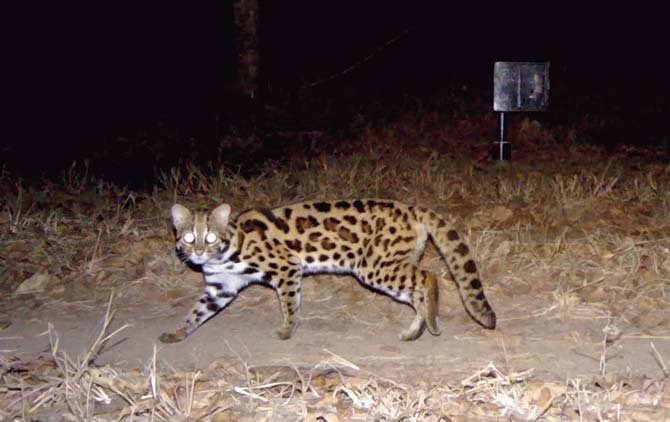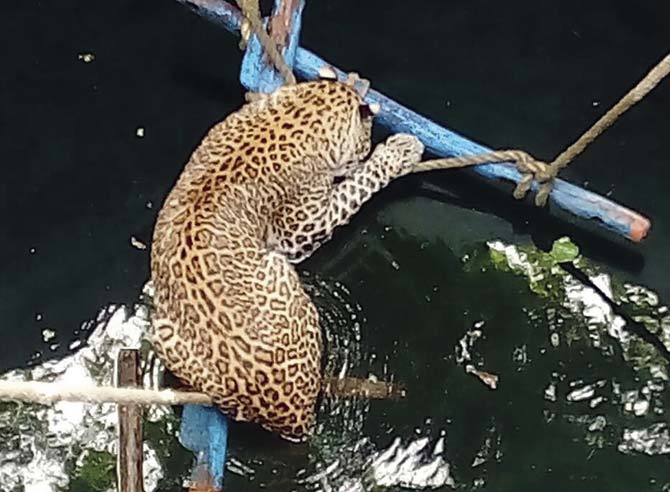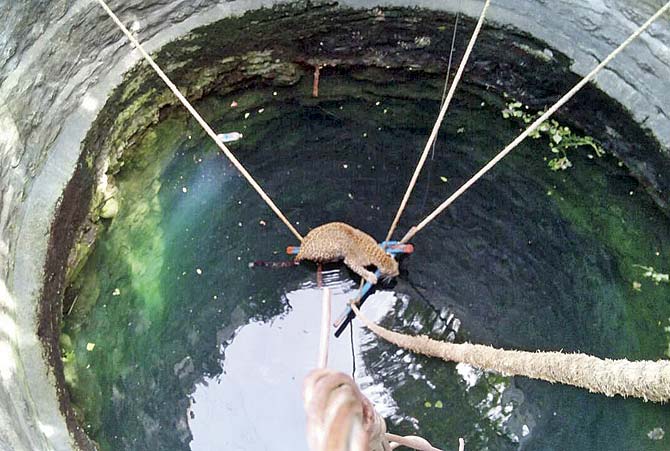Karnataka scientists set up camaras to check population sizes of leopard cats in the Western Ghats across 2,075 sq km in 2013; their paper, which reports good news for leopard cats in the region, was published in Journal of Mammalogy this week

While the leopard is infamous for reports of animal-human conflict in Mumbai, not much is known about the leopard cat, which is Asia’s most common wild cat species found predominantly in the Western Ghats.

The leopard cats can be identified by their spots, which are similar to tiger stripes and leopard's rosettes
DATE, Research scientists from the Wildlife Conservation Society (WCS India Program), conducted an in-depth research titled ‘Estimating population sizes of leopard cats in the Western Ghats’ to determine the estimated population of the leopard cat in the region. Comparable to domestic cats in size, leopard cats are identified by their characteristic dark stripes lining their head and spine.

The villagers of Bori village in the Narayngaoon range of Forest Department near Junnar were shocked to see a leopard that had fallen into the 60-feet deep well, at around 9.30am on Saturday. A rescue team was called to help the big cat. “With the help of a rope, we released a trap cage into the well. The leopard immediately walked into the cage, and we lifted it,” said veterinarian Dr Ajay Deshmukh, who was part of the rescue operation. The leopard didn’t suffer injuries and was later transported to the Manikdoh Leopard Rescue Center for further medical examination. pics credit/ Dr Ajay Deshmukh, Wildlife SOS

They can be identified by their spots, which are similar to tiger stripes and leopard’s rosettes. “There is increasing amount of work done on leopard cats in Southeast Asian countries, but in India, studies on leopard cats are generally limited to documentation of occasional sightings,” said Arjun Srivathsa, research associate, and the lead author of the study.
The team from Karnataka, comprising Srivathsa, Ravishankar Parameshwaran, Sushma Sharma and Dr Ullas Karanth, analysed the data recorded across an area of 2,075 sq km covering Bhadra, Biligiri Rangaswamy Temple (BRT), Bandipur and Nagarahole Tiger Reserves. And, their camera traps have captured some good news.
While Bhadra Wildlife Sanctuary in Karnataka has the highest population density with over 10 leopard cats per 100 sq km area, Biligiri Ranga Temple (BRT) Tiger Reserve in Karnataka has four individuals per 100 sq km. The survey yielded sparse data from Bandipur and Nagarahole.
The authors assign possibility of high tiger and leopard densities in these two areas, as a reason. In their conclusion, they point out the preference of wet areas by leopard cat species as Bhadra and BRT receive more rainfall. In Bhadra, high leopard cat density areas were mostly restricted to secondary forests and coffee plantations outside park boundaries and village relocated sites within the reserve.
This is significant as these areas also tend to have greater populations of rodents; presence of leopard cats could keep a check on rodent populations. “The research will aid in scientific reassessment of the species’ conservation status, which is currently categorised as ‘least concern’ in International Union for Conservation of Nature (ICUN) Red List, despite limited ecological knowledge. The study was published this week in Journal of Mammalogy,” said Srivathsa.
 Subscribe today by clicking the link and stay updated with the latest news!" Click here!
Subscribe today by clicking the link and stay updated with the latest news!" Click here!









